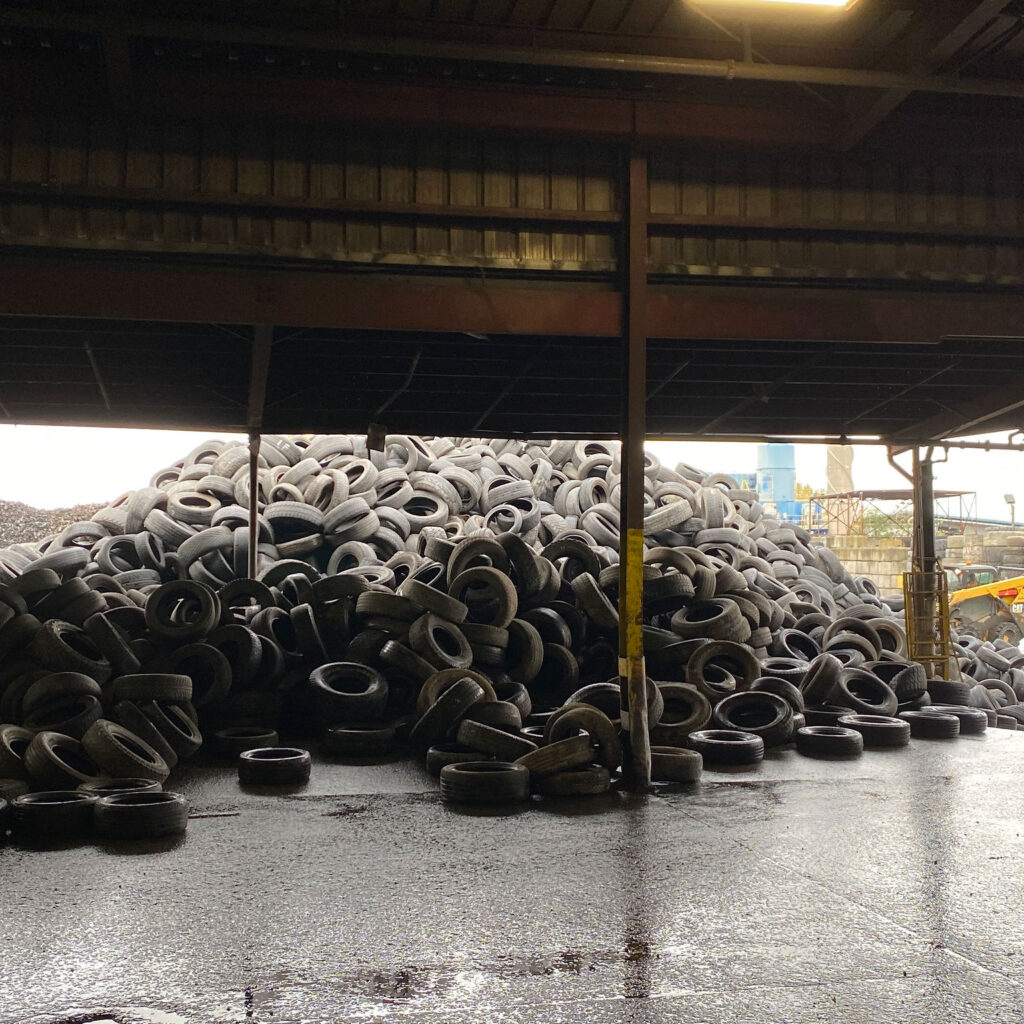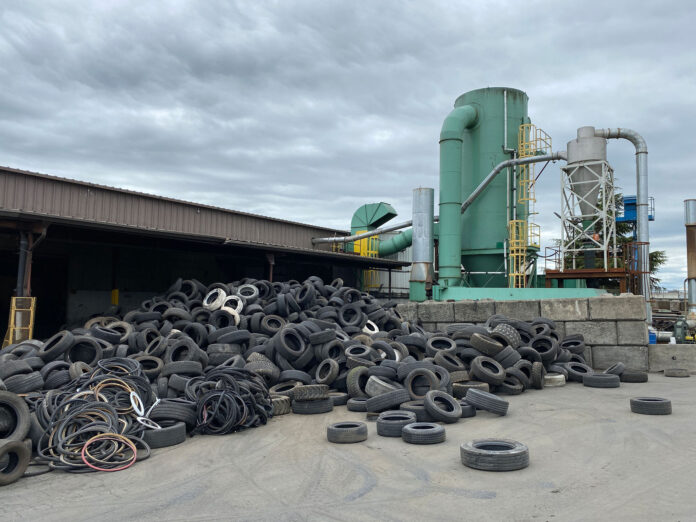Tires play a very important role in our vehicle’s longevity and how it handles on the road, especially during the changing seasons in North America.
When we go to a shop to get new tires for our vehicles, we assume that the old ones will be tossed out. But what happens to these old tires? One company, Western Rubber Products (a division of Liberty Tire Recycling), located in British Columbia, takes these worn tires and creates meaningful ways to reuse them. Western Rubber Products is one of the major players in the tire recycling business in Western Canada.
To elaborate on the tire recycling process, I interviewed General Manager Chris Major from Liberty Tire. At Liberty Tire there is a very strategic collection model which they follow in BC for the recycling process. When the tires are received in Delta, they are in trailers or dropped off by their local haulers. Liberty Tire location in Delta is a mechanised facility. The shredder will shred or cut the tire rubber into 4-6 inch shred, and then it gets further processed into smaller sizes. The rubber is used for various different products which is outsourced to another facility. Some examples include moulded products, rubber for sports fields or running tracks. In addition, the rubber mulch is sold at big box stores like Home Depot.
The company faces lots of challenges when dealing with the shredding of tires and the various types of machines being used in the process. One of the main challenges is fire reduction as dealing with flammable fuels and fibre makes housekeeping a challenge. Wire liberation is a process which involves, taking out the wire from tires and extracting the fibre from tires.
Chris advised the following to help educate consumers understand what happens to tires at the end of life. The Tire Stewardship of British Columbia has a social media platform along with conducting provincial round ups. The provincial round ups are where the public is invited to a specific city or town to bring their scrap tire material. At these round ups, information booths are setup displaying the different materials which can be made with recycled tires. Lastly, we need to educate the public about Liberty Tire’s purpose and what recycled tires can produce, such as, playgrounds, sports fields, molded goods and various other products.
To elaborate on the tire collection process, I interviewed Operations Manager Joe Pitre from Liberty Tire. When discussing the tire collection model and how it is implemented by Liberty Tire, we were provided with very interesting information. Liberty Tire has a fleet of tractors and trailers. It consists of 53 foot dry vans, 28 foot dry vans and roll off trucks which facilitate tire pickup throughout the province of BC. Dry vans are defined as a type of semi-truck trailer that is fully enclosed to protect your shipment from the elements. As in Liberty’s case, their shipment would be the tires which are collected from across BC. As for tire collection within the lower mainland, the company has a small fleet of hired haulers, which utilize smaller caged trucks and cubed vans, to get into smaller locations like new car dealerships. Liberty Tire has seven company trucks, six contract trucks and seven haulers which service the entire province of BC. Moreover, the haulers are as big as five to six trucks per hauler, or small haulers which consist of one to two trucks and they do majority of the collection in the lower mainland. The haulers are an instrumental component of Liberty Tire as they have been in collection for decades, even before the program started. As a result, the company has some second and third generation haulers from the same families. Lastly, the haulers are a very crucial part of the company in the success of building the business and providing the best customer service. Collectively, the company collected over 60,000 metric tons of tires last year.
When we look at the number of how many locations Liberty Tire services in BC, the numbers are split up between retailers and generators. Retailers are defined as customers who sell tires such as Kal Tire or Fountain Tire. There are approximately 2400 retailers which Liberty Tire services. Generators are companies that acquire used tires such as landfills, auto wreckers, or other recycling facilities. There are approximately 1700 generators which Liberty Tire services.
For having scrap tires picked up, it is a process and there are requirements which are needed to be met. Any retailer or generator can qualify for a free pickup within the TSBC’s tire recycling program. The criteria which they must meet is, they need to be registered with TSBC and there is no cost associated with it. In addition, the tires must fall in the best and underspecified program material, and TSBC is called a schedule A.
Liberty Tire collects tires across the entire province of BC. They pick up tires from Yukon and North West Territory borders. Also, along the eastern border to Alberta and south of Washington and Montana border.
When we look at Liberty Tire and what makes their BC model work and the challenges they face on a day to day basis, we need to look at the overall bigger concept. The company believes in their hard working employees and their trusted vendors which make their BC model work.
Liberty Tire services every part of BC. The company sends collectors to the Gulf Islands, Sunshine Coast, and Haida Gwaii to service the smaller communities in BC. This illustrates the company is everywhere, and they have a network or truck in place to load scrap tires all across BC. Moreover, the company has partners in smaller areas that will collect the tires and hang onto them until they have the minimum 50 tires required for a pick up. Liberty has the best people in the business as far as rubber recycling is concerned.
All of Liberty Tire’s services work together seamlessly to create a greener tomorrow. Combined with the ingenuity, determination and passion from their hardworking employees, they help their partners gain competitive advantages and solve problems. The services provided are not only beneficial for the environment but they provide opportunities for the company to add value for their consumers.







